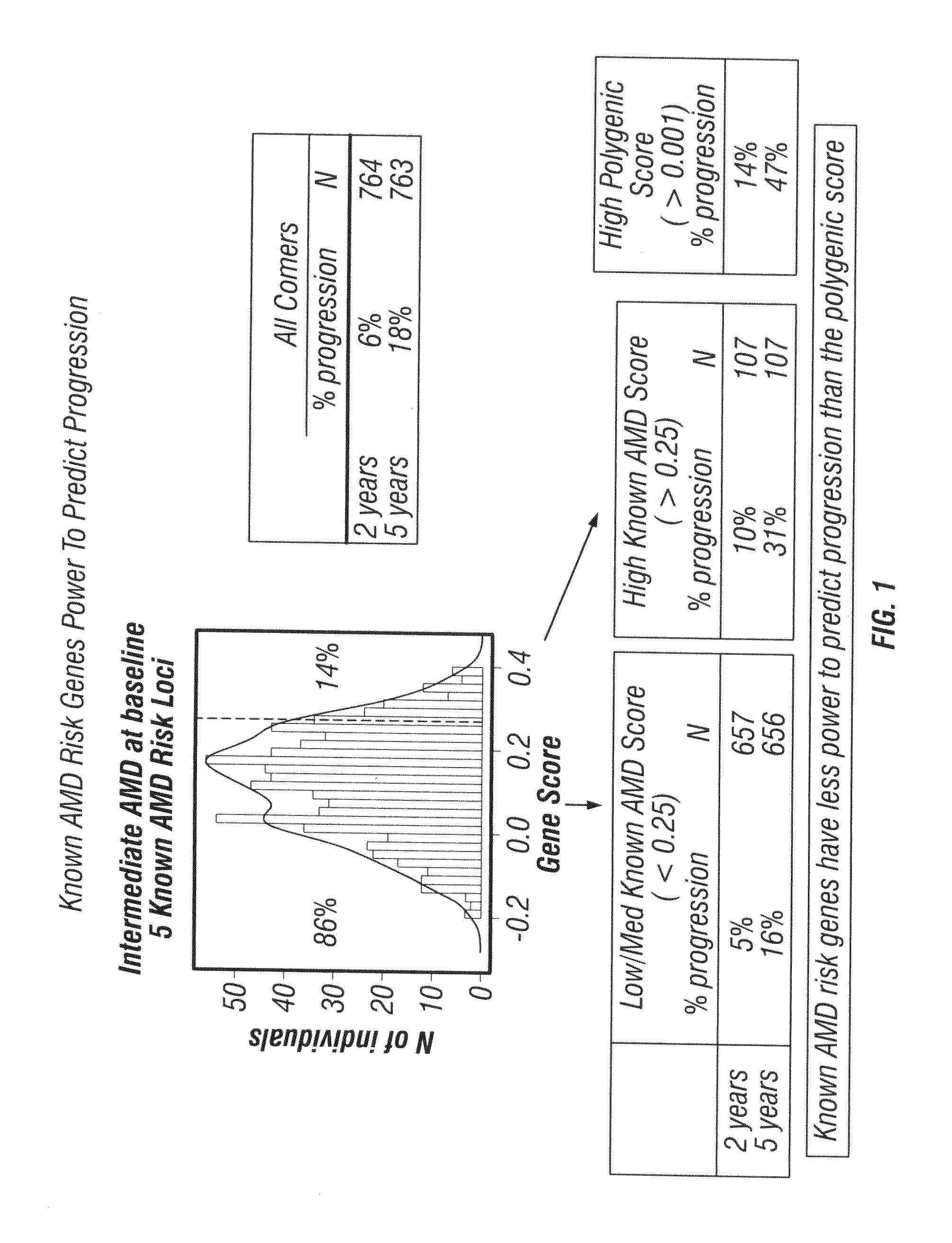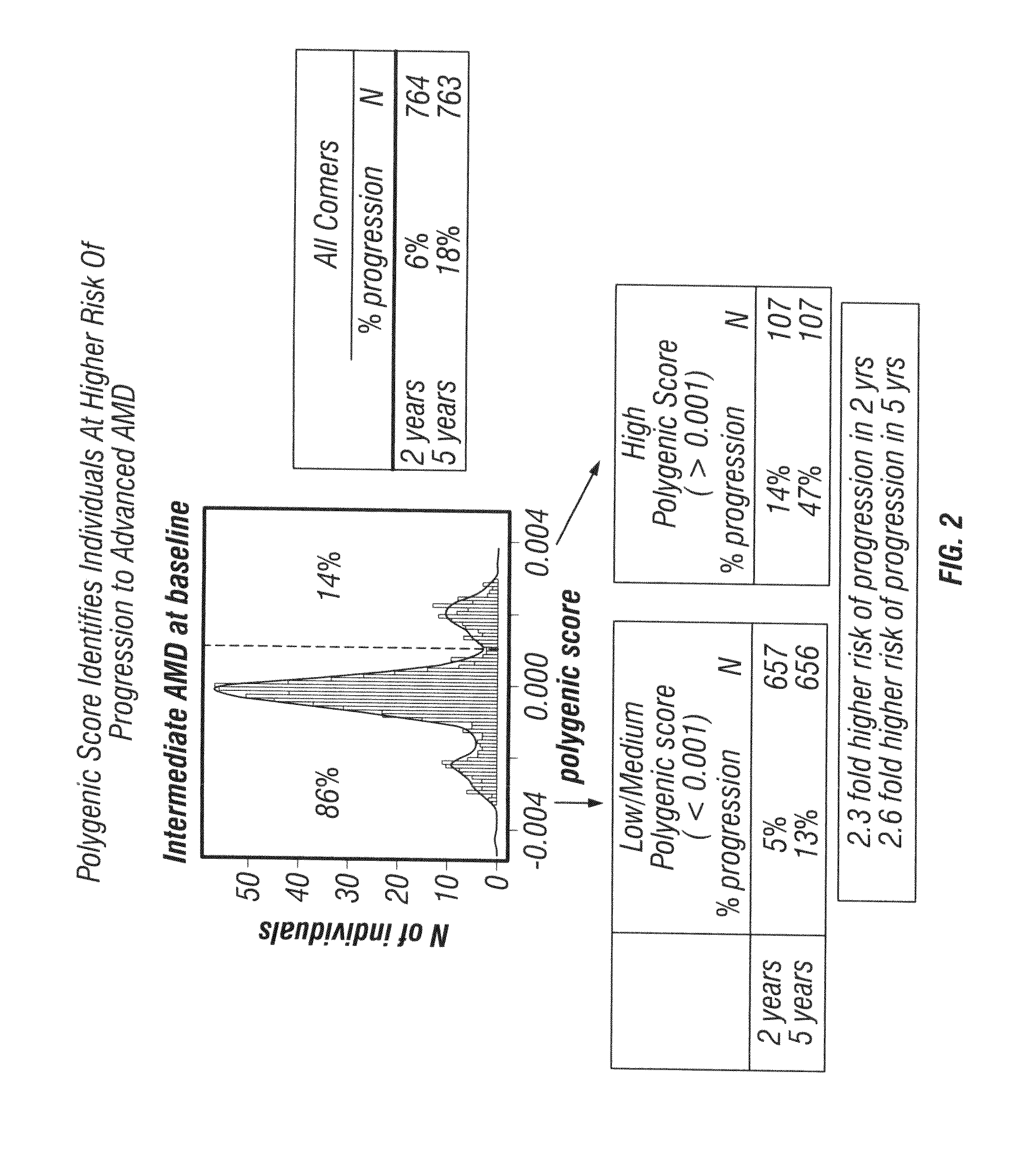Predicting progression to advanced age-related macular degeneration using a polygenic score
a technology of advanced age-related macular degeneration and polygenic score, which is applied in the direction of drug composition, library screening, antibody medical ingredients, etc., can solve the problems of relative contributions of these factors, blinding disciform scars in and under the retina, and the contribution of each class of genetic variation to disease risk or progression
- Summary
- Abstract
- Description
- Claims
- Application Information
AI Technical Summary
Benefits of technology
Problems solved by technology
Method used
Image
Examples
example
Predicting Progression to Advanced Age-Related Macular Degeneration Using a Polygenic Score
Methods
[0109]Study Samples, Ascertainment and Genotyping
[0110]AMD Cases. There are 4 AMD case collections used in the study: AREDS (Age-Related Eye Disease Study founded by the National Eye Institute), DAWN, UCSD study and OSHU. We chose 564 samples from the Age-Related Eye Disease Study (AREDS). The inclusion criterion was based on the final AMD status (AMDSTAT) of the patients (6=Large Drusen, 11=CNV, 12=CGA, 13=both CNV and CGA) were used as cases in our analysis. We also included 352 AMD CNV cases from the DAWN study. The DAWN study is a genetic sub-study which is a collection of samples from three Phase II / III Lucentis clinical trials (FOCUS, MARINA, and ANCHOR). Another 142 samples were recruited from the UCSD AMD study. Finally, 42 CNV cases from a Lucentis IST preformed at OSHU were included as additional cases.
[0111]AMD controls. Controls in our analysis come from 4 separate collect...
PUM
| Property | Measurement | Unit |
|---|---|---|
| follow-up time | aaaaa | aaaaa |
| allelic frequency | aaaaa | aaaaa |
| body mass index | aaaaa | aaaaa |
Abstract
Description
Claims
Application Information
 Login to View More
Login to View More - R&D
- Intellectual Property
- Life Sciences
- Materials
- Tech Scout
- Unparalleled Data Quality
- Higher Quality Content
- 60% Fewer Hallucinations
Browse by: Latest US Patents, China's latest patents, Technical Efficacy Thesaurus, Application Domain, Technology Topic, Popular Technical Reports.
© 2025 PatSnap. All rights reserved.Legal|Privacy policy|Modern Slavery Act Transparency Statement|Sitemap|About US| Contact US: help@patsnap.com



